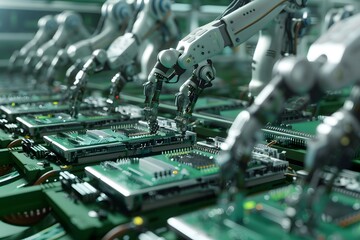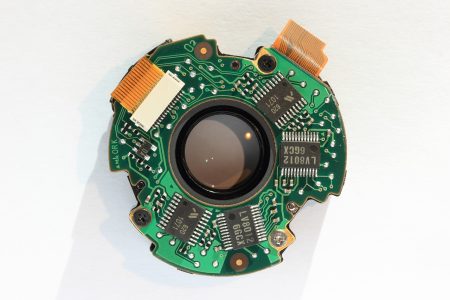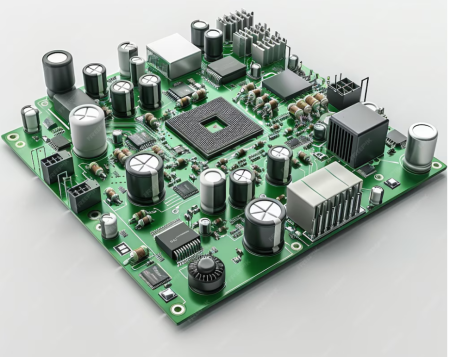- +86-755-23012705
- Building 3, Jinfeng Industrial Park, Fuyong Street, Baoan District, Shenzhen ,China
- [email protected]
In the fast-paced world of electronics manufacturing, controlling production costs while maintaining high quality is crucial to staying competitive. Printed Circuit Board Assemblies (PCBA) are at the heart of virtually every electronic device, from smartphones and medical devices to automotive systems and consumer electronics. The challenge lies in balancing cost-efficiency with the need to produce reliable, high-quality assemblies. In this blog, we’ll explore key strategies that can help manufacturers effectively control PCBA production costs without compromising quality.
The first step in controlling costs begins long before the actual manufacturing process. Design for Manufacturability (DFM) is a critical concept that ensures a design is easy and cost-effective to produce. By addressing potential issues during the design phase, manufacturers can avoid costly redesigns and production delays later on.
Minimize Complex Designs: Complex PCBA designs with intricate circuitry or densely packed components can drive up costs due to longer production times and the need for advanced equipment. Simplifying the design, using fewer layers, and strategically placing components can reduce manufacturing time and material costs.
Standardize Components: Using off-the-shelf, commonly available components instead of custom or rare parts can help reduce costs. Standard components are generally cheaper and more readily available, which minimizes procurement issues and lowers the overall bill of materials (BOM) costs.
Optimize Trace Routing: The routing of traces (the paths that connect different components on the board) affects both manufacturing cost and board reliability. Efficient trace routing can reduce the use of expensive materials like gold or copper and minimize the risk of electrical issues. A clean, efficient layout also reduces the need for specialized tooling, which can add to costs.

Automation is one of the most effective ways to reduce PCBA production costs while maintaining quality. Automated processes like pick-and-place, wave soldering, and automated optical inspection (AOI) not only improve consistency and reduce human error but also speed up production, lowering labor costs.
Pick-and-Place Machines: Automated pick-and-place machines ensure that components are placed accurately and consistently, improving the speed and quality of the assembly process. By minimizing human involvement in this step, manufacturers reduce the risk of placement errors, which can lead to costly rework and defects.
Wave Soldering: For through-hole components, wave soldering is a highly efficient process that provides consistent results while lowering labor costs compared to manual soldering. It’s especially useful for high-volume production, as it can handle multiple components at once, ensuring uniform solder joints and improving quality.
Automated Inspection Systems: AOI and X-ray inspection systems help detect defects like missing components, incorrect placements, or soldering issues at early stages of production. These systems reduce the chances of defective products reaching the customer, ensuring high quality without the need for extensive manual inspection.
Adopting lean manufacturing principles can significantly reduce waste and improve efficiency, both of which contribute to cost savings in PCBA production.
Just-in-Time (JIT) Inventory: Implementing JIT inventory management ensures that materials are ordered and delivered exactly when needed, which minimizes storage costs and reduces the risk of obsolete inventory. It also helps avoid production delays caused by material shortages.
Reduce Waste: Lean manufacturing focuses on eliminating waste in all forms, whether it’s excess materials, time, or labor. For PCBA manufacturing, this could mean optimizing the use of raw materials, reducing defective boards, or minimizing machine downtime. Continuous process improvement can result in lower costs and higher throughput.
Process Standardization: Standardizing workflows and processes ensures consistency across production runs, which not only improves quality but also reduces the time and cost associated with training employees. Consistency in processes leads to fewer errors and defects, ultimately reducing rework and scrap rates.

Establishing strong relationships with suppliers can also help manage production costs. Suppliers are key partners in controlling both material costs and lead times, which directly impact overall production costs.
Negotiate Bulk Discounts: Purchasing components in bulk can often result in discounts, helping to lower the cost of materials. Long-term relationships with suppliers can also provide better pricing or priority access to in-demand components, reducing the chances of delays caused by supply chain issues.
Component Substitution: Sometimes, substituting higher-end components with more cost-effective alternatives can maintain the functionality and quality of the product without sacrificing performance. Suppliers may offer alternative components that meet the same specifications but at a lower cost, which can significantly reduce the overall BOM.
Reduce Lead Time: By collaborating closely with suppliers, manufacturers can ensure timely delivery of materials, preventing costly production delays. Faster lead times allow manufacturers to meet deadlines and avoid the expense of rush orders.
Ensuring quality does not mean spending excessively on inspection or rework; instead, it’s about incorporating quality control processes that are integrated into every step of the production cycle. Preventing defects from occurring in the first place is always more cost-effective than correcting them later.
In-Line Testing: Performing in-line testing at various stages of production, such as functional tests and in-circuit tests (ICT), helps catch defects early. Identifying issues before they progress too far reduces the cost of rework and ensures the final product meets the required quality standards.
Failure Mode Analysis: Conducting a Failure Mode and Effect Analysis (FMEA) during the design phase helps identify potential weak points in the PCBA that could lead to failure. By addressing these potential issues early on, manufacturers can reduce the likelihood of defects and improve the overall reliability of the product.

Effectively controlling PCBA production costs without sacrificing quality requires a strategic approach at every stage of the manufacturing process. By optimizing the design for manufacturability, automating key assembly processes, adopting lean principles, collaborating with suppliers, and focusing on robust quality control, manufacturers can keep costs low while ensuring their PCBA products meet the highest standards. With careful planning and attention to detail, it’s possible to strike the right balance between cost-efficiency and product quality, ultimately leading to greater profitability and competitiveness in the marketplace.
Discover a World of Possibilities with XPCB Limited
At XPCB Limited, we’re here to help you explore new horizons. Our advanced PCB manufacturing, rapid prototyping, and turnkey PCBA solutions make it easy for you to turn your ideas into reality. Trust us to deliver excellence and reliability every step of the way. Join us and experience the power of innovation with XPCB Limited by your side.






XPCB Limited is a premium PCB & PCBA manufacturer based in China.
We specialize in multilayer flexible circuits, rigid-flex PCB, HDI PCB, and Rogers PCB.
Quick-turn PCB prototyping is our specialty. Demanding project is our advantage.
Tel : +86-136-3163-3671
Fax : +86-755-2301 2705
Email : [email protected]
© 2024 - XPCB Limited All Right Reserve
